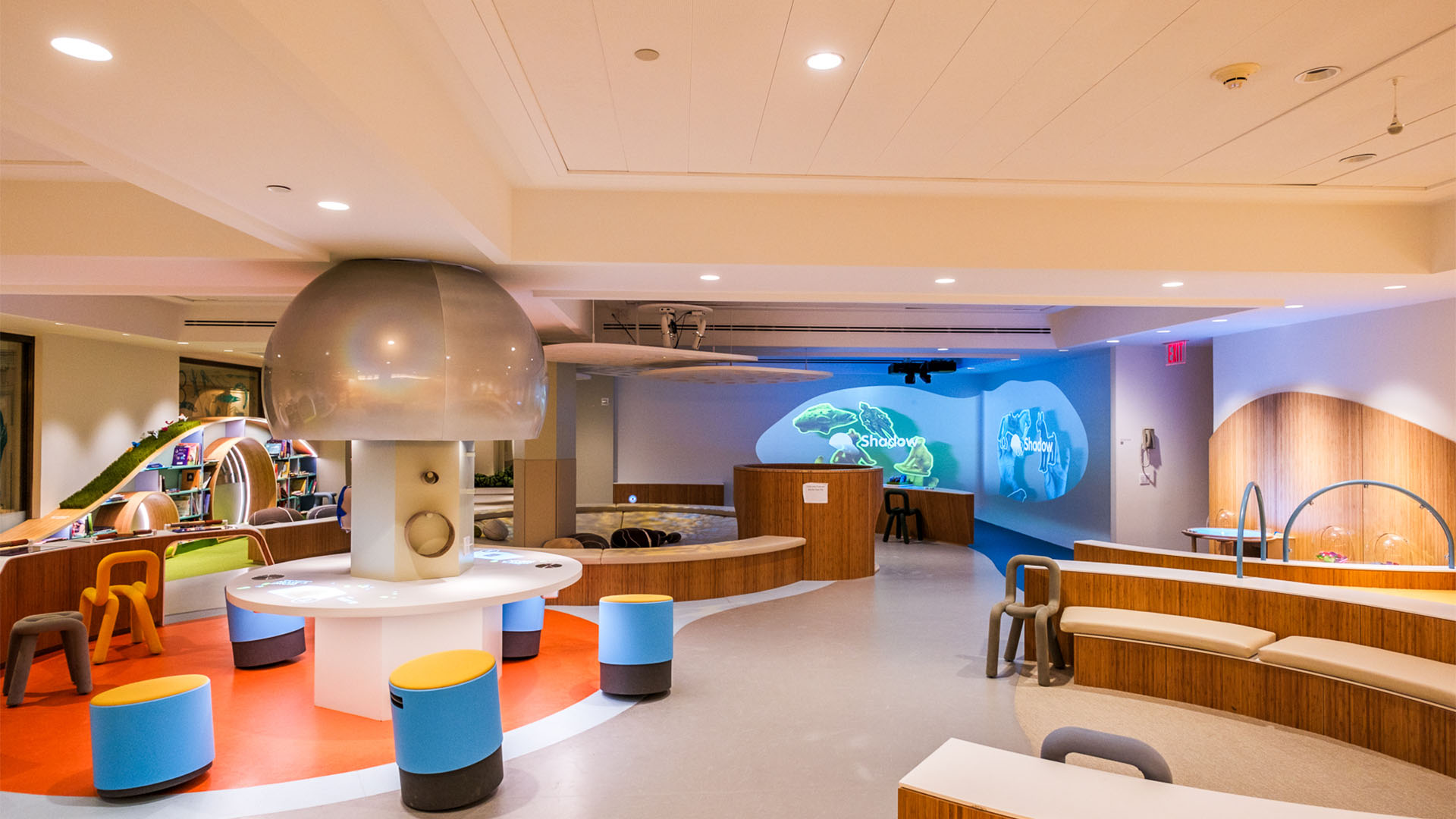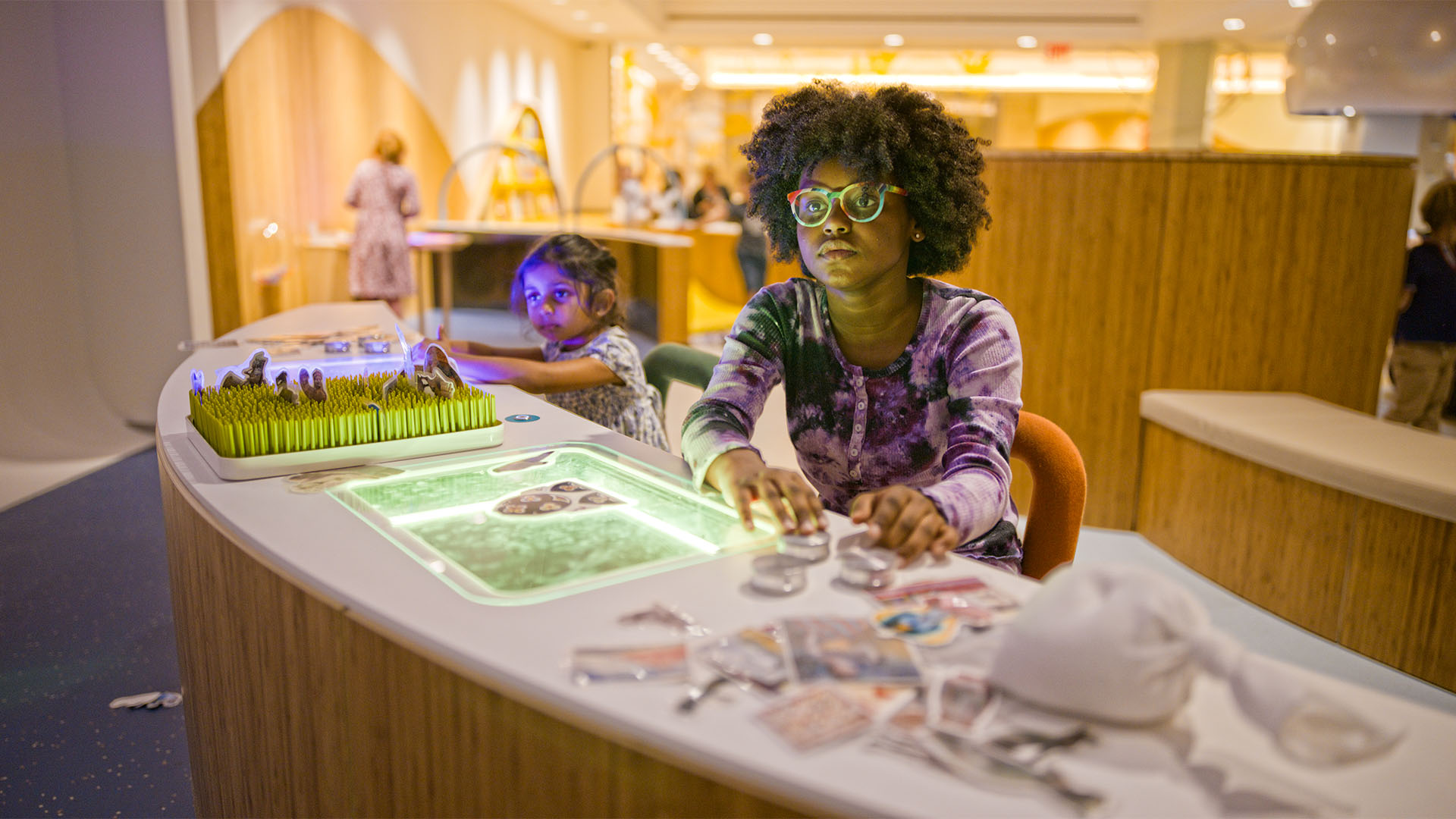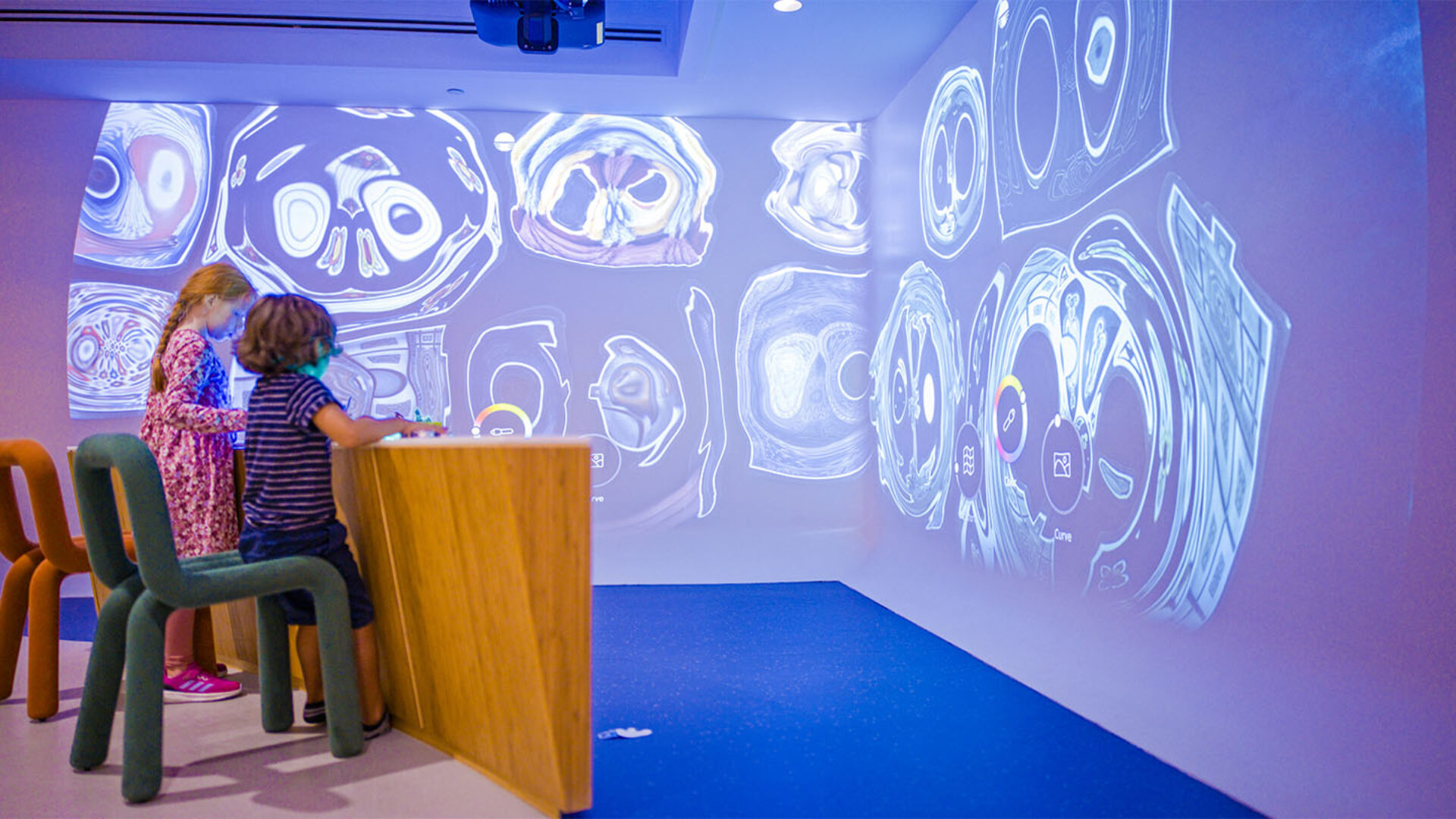The Met 81st Street Studio
The Metropolitan Museum of Art 81st Street Studio is a science and art play space for children. Designed in partnership with KOKO Architecture + Design and conceived by Heidi Holder, The Met’s Frederick P. and Sandra P. Rose Chair of education in consultation with departments throughout the museum, the 3,500 square-foot interactive space invites the museum’s youngest visitors to explore, discover, and interact with art and what it’s made of.
Agency
Bluecadet
Practice Area
Client
The Metropolitan Museum of Art
Industry

The Challenge
To create a unique, interactive space for the Met’s youngest visitors that invites them to explore, discover, and interact with art and what it’s made of.
Project Vision
Exploring Art Through Materials Understanding both the scientific properties and the artistic potential of materials is a fantastic entry point for children to understand and appreciate art. Interactive touchscreens are Integrated within a curving form exploring three materials: clay, metal, and wood. Each screen offers engaging activities enabling children to playfully compare materials, discover fun facts about material properties, and see real world examples of how artists use these properties to create objects. An adjacent microscope allows children to look at these materials up close. Together, these experiences encourage close looking and scientific investigation.

The Optical Wall is a two-sided immersive projection where you can play with light and color, just like artists do.
Dan King

The light table includes interactive LEDs and an embedded camera. Three different modalities explore properties of color, distortion, and shadow.
Dan King
Design + Execution
Learning Through Making At the center of the 81st Street Studio is a form that resembles a tree. Beneath this tree is a digital station inviting visitors of all ages to make and play. Leveraging camera vision and projection, the station offers two interactive activities. First, visitors can use hands-on tools to carve their own “woodblock,” and then create virtual “impressions” of their design in projected light with different colors, patterns, and other attributes. The second activity guides visitors to design physical drums, and then use digital tools to play them in a variety of styles. Playing with the Science of Light Across the back wall of the space is an immersive, multi-user interactive visual playground that celebrates how artists use light and color. The installation features a dynamic projection wall and light table. Here, children experiment with patterns and art images, using different modes color, shadow and distortion to playfully explore optics, the behavior, and properties of light, while creating unique and mesmerizing visual displays. Magic in the details hidden throughout the space is what Heidi Holder, the museum’s Chair of Education, describes as ‘subtle magic.’ These are unexpected visual surprises that reward discovery and close looking. Small eyes peer out from unexpected places; as visitors approach, the eye blinks, before offering a delightful surprise from The Met collection for those paying close attention. These displays hint at the experience of visiting the full museum, where there is always something more to discover and explore.

Place materials on the light table and see them come to life in front of you.
Dan King

At the Tree, delve deeper into the scientific process of wood, clay, and metal, imagining the possibilities of these artwork materials.
Dan King

Build a drum using physical materials, and play the drum using interactive technology with digital effects like echo, delay, and reverb.
Dan King

Make a digital woodblock print, scratching out a physical print and using digital technologies to “print” it as an impression on the table.
Dan King

Instances of Subtle Magic offer additional layers of connection, surprise, and delight across the space, hinting that there’s always more to discover at The Met.
Dan King
Project Details
Seamlessly balances the digital and the tactical in an engaging and inspiring way. A digital experience that did not let the digital overshadow the experience.
As a highly interactive exhibition space that invites young visitors to explore, discover, and interact with the process of art making, the design ingeniously translates the physical acts of creating art into gesture-specific interfaces.
The integration of digital technology as a tool for art-making allows for experimentation, flexibility and hands-on creativity within a museum space without the mess and potential perils of a traditional art studio. The delightful integration between digital and physical design brings a human quality to the digital touchpoints and also attracts a younger demographic through its use of interactive technology and game-play behaviors. The aesthetics are simple, modern and friendly, creating an accessible environmental language that puts the act of making center-stage, clearly supporting the experiential intent of delivering on process and play.
Design Team
Brett Renfer (experiential director)
Ellen Friefeld (executive producer)
Kim Gim (associate creative director)
Nina Callaway (senior narrative strategist)
Adiel Fernandez (technology lead)
Katie Lannigan (senior producer)
Katie Han (creative developer)
Clay Tercek (senior developer)
Michael Prisco (visual designer)
Collaborators
KOKO Architecture + Design (architecture)
Roundsquare Builders (construction manager)
Mark Richey Woodworking (millwork)
Moey (av integration)
The Metropolitan Museum of Art:
Max Hollein (chief executive officer and Marina Kellen french director)
Heidi Holder (Frederick P. and Sandra P. Rose chair of education)
Inka Drögemüller (deputy director: digital, education, publications, imaging, libraries, and live arts)
Darcy-Tell Morales (educator in charge, teaching and learning)
Alicia Cheng (head of design)
Mabel Taylor (associate project manager, construction)
Anna Zepp (senior project manager, director’s office)
Mandy Kritzeck (senior producer and editor, capital projects)
Photo Credits
Dan King
Open Date
September 2023





